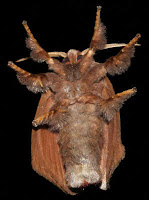NOCTUIDAE and EREBIDAE
Since I am now using the later classification of EREBIDAE which came from the splitting of NOCTUIDAE I have made a list of the sub families that have had samples taken in Australia.Let me know if I have missed any Australian sub families.
Click on the picture to enlarge.
***********************************************************************************
Possibly Euproctis Poss galactopis LYMANTRIINAE EREBIDAE
Small white moths can be difficult to identify so there is plenty of room for error.
Family:- EREBIDAE
Sub Family:- LYMANTRIINAE
Genus:- Euproctis (Possibly )
Species:- galactopis (Possibly)
*********************************************************************************
LYMANTRIINAE Unknown 2863-5378
Note the spurs, one long one short on the hind leg. The moth is missing a lot of scale.LYMANTRIINAE Unknown 2863-5378
**********************************************************************************
Fraus crocea HEPIALIDAE
EDIT:- August 2018.
I had this down as "LYMANTRIINAE Unknown 1296-7837", but it turns out it is a HEPIALIDAE.
I will do an entry for it Wednesday August 22 2018
**********************************************************************************


























